New statistics show the meetings industry pumps more money into the economy than almost any other sector
What industry creates more jobs in the United States than auto manufacturing, pharmaceuticals, or oil and gas? As an event professional, you intuitively know that it is the event industry. But now you have the numbers to share with inquisitive family members—and random people on the street if the urge comes over you—regarding the tremendous economic impact you have every day.
A new study by Tourism Economics (a division of Oxford Economics) for the Events Industry Council and Meetings Mean Business shows that bringing people together for face-to-face meetings contributes massively to the global economy.
How big of an impact? In the United States alone in 2016, 1.9 million meetings generated $845 billion in economic impact. More than 251 million people came together to shake hands, do business and learn. To put that huge number in perspective, that is more people than the population of Brazil.
The study tracked everything from direct spending at venues to indirect benefits through the supply chain and purchases by people working in the industry. Direct spending in 2016 totaled approximately $325 billion, and $446 billion was contributed to the nation’s gross domestic product (GDP). That direct spending figure is more than the entire GDP of Norway for the same year. And that number is growing. Direct spending has increased 23 percent since 2009.
In total, the report showed the industry generates a 160 percent return, with $1.60 put into circulation for every $1 spent, including tax dollars into the treasuries of cities where meetings are held. International travelers have an even larger impact because they spend more and stay longer.
Meetings are a critical part of the hospitality industry. In 2016, groups generated 300 million room nights, representing nearly $50 billion in spending on hotels. A total of $48 billion was spent on food and beverage services alone. That is a lot of full coffee pots and steaming chafing dishes. Meetings also contributed $104 billion in federal, state and local taxes, a number that breaks down to a total impact of $879 per U.S. household.
A Strong Business Case
That dollar impact is on top of the important knowledge-sharing at scientific conferences, sales generation at industry events, and networking and career development that happens at customer events and whenever people come together.
Mike Massari, chief sales officer for Caesars Entertainment, sums up the profound affect meetings have on people’s lives this way: “Every good idea started with a meeting.” The U.S. government, the internet, American Cancer Society, Jim Cramer filming Mad Money—all these things required people coming together and exchanging information.
A survey of senior executives in mid-sized to large companies conducted by APCO Insight for U.S. Travel in 2015 showed that nine out of 10 testified that meetings improve their ability to close deals, network and grow professionally. Significantly, four out of five said they have attended an in-person meeting, conference or event that would not have yielded the same success if it had been done by video or phone conference.
Similar super-majorities pointed to in-person meetings as the top way to achieve success for networking, new business opportunities, workforce engagement, training and professional development.
When the report was released, Paul Van Deventer, president and CEO of Meeting Professionals International and co-chair of Meetings Mean Business Coalition, summed up the critical role meetings play in connecting people and bolstering the economy. “The numbers reiterate what anecdotally we always knew to be true,” he said. “No matter the industry, investing in face-to-face meetings is a smart choice.”
Telling GMID Stories Every Day, Everywhere
Smart Meetings conducted our own survey to mark Global Meetings Industry Day. We wanted to know how industry leaders across the country are telling the story of the impact you have, and what they are doing to broadcast that message today and all year long.
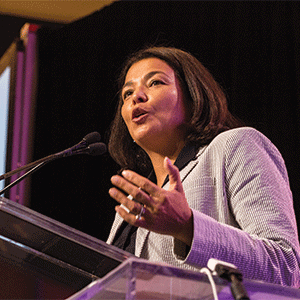 Nan Marchand Beauvois, senior vice president of national councils, U.S. Travel Association
Nan Marchand Beauvois, senior vice president of national councils, U.S. Travel Association
How do you explain the importance of the meetings industry?
The best way to think about it is in the number of jobs this industry creates. The meetings sector supported more direct jobs than many large manufacturing sectors, including machinery, food, auto and chemicals. It sustained more jobs than the telecommunications, or oil and gas extraction industries. Another way to look at is it that every 43 meeting participants support one U.S. job, on average, in 2016.
What is an example of a meeting you witnessed that had a significant impact on real lives?
A group of students from an inner-city high school in Los Angeles had the opportunity to attend a series of meetings I organized to expose them to opportunities available in the industry. Those face-to-face encounters provided the motivation many of the students needed to stay in school and continue their education. Recently, one of those students tracked me down to let me know he went on to college and is now a teacher. He wants to create a similar program for his students in Central Los Angeles.
Beauvois will mark GMID by speaking at an MPI Southern California/SITE event at Hilton Los Angeles/Universal City, and then fly to Las Vegas to participate in its lineup of events.
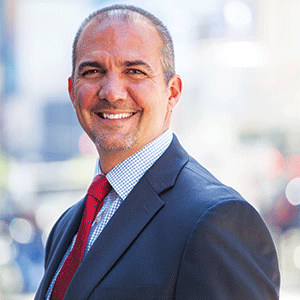 Jerry Cito, senior vice president of convention development, NYC & Company
Jerry Cito, senior vice president of convention development, NYC & Company
How do you explain the importance of the meetings industry?
My elevator pitch is short and sweet. I say, “I sell the City of New York, and I’m honored to do so.” I raise awareness of both the product—from the Javits Convention Center to big box hotels, to boutique spaces that host intimate meetings—and services available to groups who choose to “Make it NYC.” Individuals, businesses and the city’s economy benefit from meetings and conventions being held here.
What is an example of a meeting you witnessed that had a significant impact on real lives?
Whenever a group comes together—be it an intimate handful of five or a convention of 5,000—the result is positive, global impact. I’ve been blessed in my time at NYC & Company to be a part of funding the Chairman’s Scholarship at PCMA’s Annual Meeting, which helps students not only attend the meeting, but also receive mentorship through shadowing and benefits from additional educational opportunities.
I’ve personally witnessed the resulting impact, especially when it comes to 2013 scholarship winner Casey Carignan. She became a member of PCMA’s inaugural “20 in their Twenties” class and currently serves as special events manager at Melaleuca: The Wellness Company.
What is the one thing that could grow the impact of the industry even more?
We must invest in the future. At NYC & Company we invest in emerging markets—recently, we hired Watson Li as regional director of international MICE for Asia Pacific, Africa and the Middle East. Watson fits into the existing robust team we’ve amassed, with a presence on the West Coast, in the Midwest, District of Columbia and the United Kingdom, complementing ongoing efforts in our essential, established markets.
Cito and the convention development team at NYC & Company once again plan to mark GMID by partnering with members throughout the boroughs to light the city in blue, the color of the Meetings Mean Business Coalition. Also, a tristate meeting planner event will introduce 200 planners to the brand-new NFL Experience Times Square, one of more than five new attractions and venues to open in Midtown Manhattan over the last year.
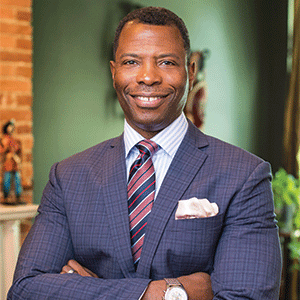 Elliott L. Ferguson II, president and CEO, Destination DC
Elliott L. Ferguson II, president and CEO, Destination DC
How do you explain the importance of the meetings industry?
I reference the significant number of jobs created and revenue generated in our city by meetings. That pays for general services our residents can take advantage of daily, further growing our economic success.
What is an example of a meeting you witnessed that had a significant impact on real lives?
The American Israel Public Affairs Committee policy conference and the Nuclear Security Summit both had global implications, as leaders from all over the world came together in our nation’s capital.
Emotionally, I continue to be invested in the work of the National Association for the Education of Young Children and National Education Association, both groups that make me appreciate educators even more than I already do. This March, the Atlantic 10 Conference will bring elementary students to their sports games and welcome four Arctic Education Foundation students, who will assist younger kids. They are donating to a local nonprofit and giving high school students an opportunity they would not normally have.
I also see a meaningful difference being made in the growing “protest tourism” movement. The Women’s March and the upcoming March for Our Lives are chances to voice opinions in front of lawmakers on lots of issues.
What is the one thing that could grow the impact of the industry even more?
While serving on the U.S. Travel and Tourism Advisory Board, we regularly discuss how to make the U.S. a more appealing destination. International visitation growth is the most important piece to the puzzle here, as these visitors spend more in our city than any other type of visitor, which is something that we should be able to capitalize on.
Ferguson and Destination DC will mark GMID by participating in PCMA’s Giving Good program. This campaign provides key information for those in our industry to add a give-back element to any event.
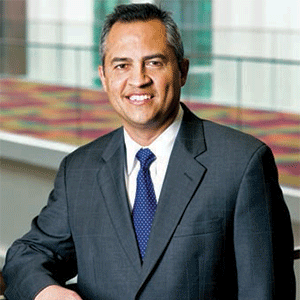 Leonard Hoops, president and CEO of Visit Indy
Leonard Hoops, president and CEO of Visit Indy
How do you explain the importance of the meetings industry?
I tell people we are a visitor-focused economic development agency that helps drive more than 80,000 jobs and $5 billion in spending in Central Indiana. According to Rockport Analytics, about 49 cents of every visitor dollar spent in Indiana goes toward employee wages.
While we have a concentration of convention-related assets in downtown, 86 percent of the employees who work in these convention-related businesses live outside of Center Township in Indianapolis, according to our employer surveys. That means conventions and tourism are ultimately a neighborhood strategy, even if those neighborhoods aren’t regularly frequented by visitors, as much of the wages earned by industry employees will get reinvested into small businesses in the neighborhoods the employees live in, keeping them strong and economically viable.
What is an example of a meeting you witnessed that had a significant impact on real lives?
All meetings bring economic benefits that help people to earn wages and cities to earn tax revenues. They allow cities to be a better place for their residents. But many meetings go well beyond their economic value. Many events include community and legacy-type projects, such as our annual Gen Con gaming convention, which raises more than $230,000 annually for Indy-area nonprofits, such as food banks and shelters.
Other events are especially meaningful by the very nature of their organizational mission; for example, I have a son with cerebral palsy who has benefitted from the hard work and continual advancements of physical therapists since his birth 13 years ago. So, when the American Physical Therapy Association brought 10,000 people to Indy in 2015, it was incredibly meaningful for me personally to see all those who have spent their professional lives working to enhance the lives of people like my son with physical challenges. They were in our city and learning how to be better at what they do.
Hoops, a PCMA board member and liaison to PCMA’s Southwest & Pacific Chapter, will mark GMID at a joint PCMA-MPI-SITE event in Los Angeles. His colleagues back in Indy will be wrapping up a 10,000-attendee American Coatings show and kicking off an American Organization of Nurse Executives conference for more than 2,300 attendees.
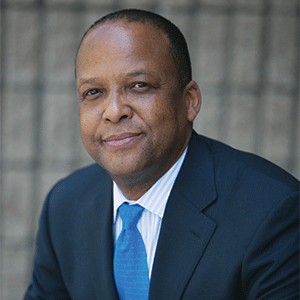 Darren Green, senior vice president of sales at Los Angeles Tourism and Convention Board
Darren Green, senior vice president of sales at Los Angeles Tourism and Convention Board
How do you explain the importance of the meetings industry?
Los Angeles is one of world’s premier destinations, welcoming 48 million visitors who pump $22 billion dollars in direct spend into our economy annually. It generates an overall economic impact of $34 billion dollars and creates critical sources of revenues to fund local police and fire, and cultural and recreational community services. Tourism is also a job creator, supporting more than 517,000 jobs within leisure and hospitality, one of the county’s strongest and largest sectors.
What is an example of a meeting you witnessed that had a significant impact on real lives?
One event that truly made a meaningful impact and difference in the city of Los Angeles was the Special Olympics World Games in 2015. It brought our community together, as talented athletes with intellectual disabilities competed together on the world stage in Los Angeles. Their genuine enthusiasm and sincerity was contagious and left a lasting impact, which will carry through 2028, when L.A. hosts the Summer Olympic Games for the third time.
What is the one thing that could grow the impact of the industry even more?
We can grow our industry by expanding hotel-room inventory, increasing international lift and competitive pricing. After seven years of continued growth, these may be challenges in the future.
Green will mark GMID with MPI, PCMA and the local SITE chapters by co-sponsoring an event in Los Angeles.




